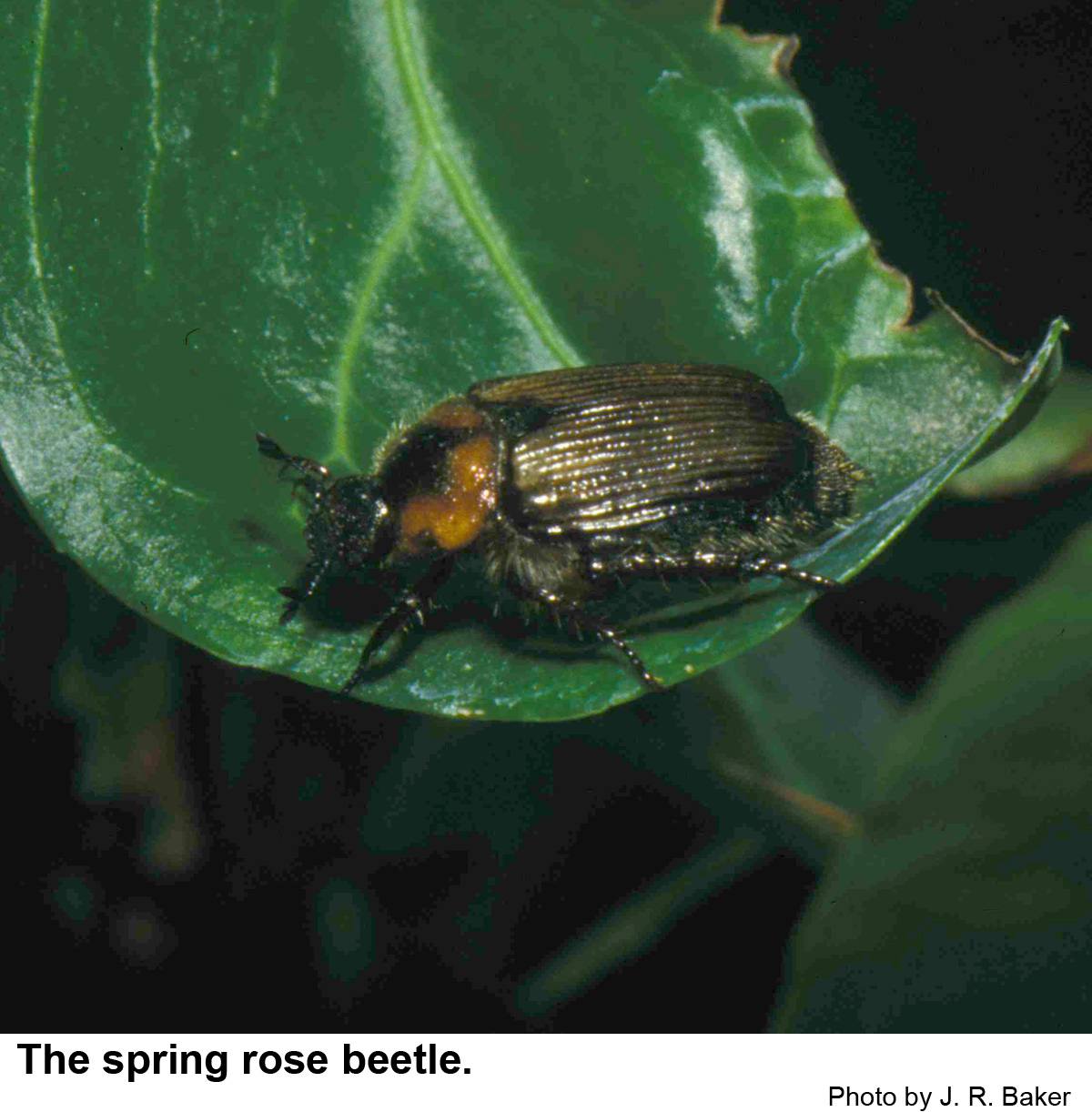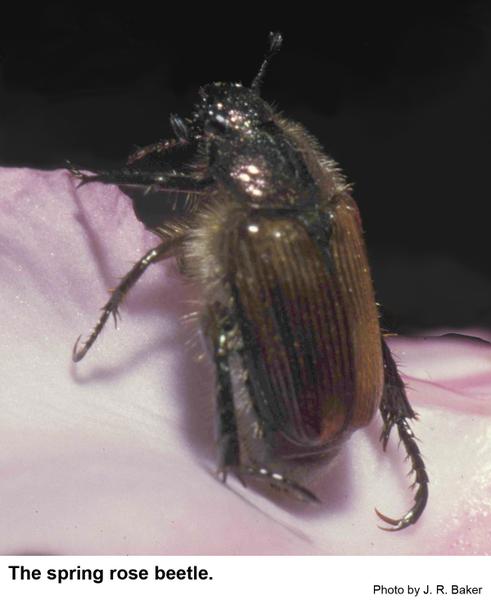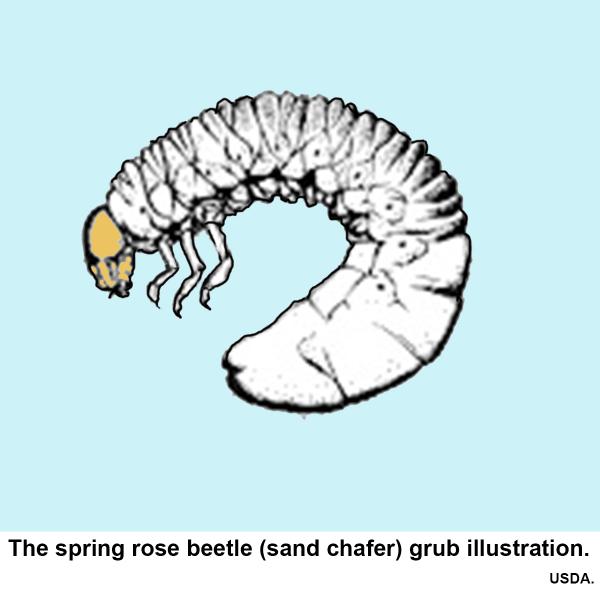Description and Biology
Spring rose beetles, Strigoderma arboricola, are also called sand chafers because the grubs often attack crops grown in sandy soils. They are much like Japanese beetles in appearance and biology, but spring rose beetles do not have small white spots along each side of the abdomen and they look slightly hairy. Spring rose beetles are greenish-black with a greenish-purple iridescence, but the wing covers are brownish-yellow. Spring rose beetles occur at least a month earlier than Japanese beetles and live an average of about 17 days.These insects overwinter as third instar larvae in the soil about 7 inches deep. In spring, grubs hollow out elongate, slightly curved earthen cells about an inch long. Within these cells, they spend approximately 6 days as inactive prepupae and 13 days as pupae. In Virginia, adult beetles usually emerge between May 15 and June 10. Further north, they often do not appear before the end of June. Several days after mating, females deposit 26 to 28 eggs singly in soil. Eggs hatch an average of 17 days after deposition. By the time larvae begin feeding, at least one month has elapsed since adult emergence. Only one generation occurs each year.
Host Plants
Adult spring rose beetles feed on rose flowers, especially pale or white cultivars as well as the flowers of iris, lilies, honeysuckle, and peony. Immature spring rose beetles are typical white grubs that feed on the roots of pasture grasses, peanut, strawberry and sweet potato.
Residential Recommendation
A parasitic nematode, Steinernema glaseri, has been found infecting spring rose beetle grubs. To protect flowers, consider using some sort of light netting. Although spring rose beetles are susceptible to Sevin and other insecticides, it is not a good idea to spray or dust flowers because doing so will harm pollinators.
References
- Common name: entomopathogenic nematodes, scientific name: (Nematoda: Rhabditida: families Steinernematidae and Heterorhabditidae). Tofangsazi, N., S. P. Arthurs, R. M. Giblin-Davis. 2012. Featured Creatures, Entomology & Nematology, FDACS/DPI, EDIS. Pub. No.: EENY-530.
- Garden Insects of North America, The Ultimate Guide to Back Yard Bugs. Cranshaw, W. and D. Sheltar. 2004. Princeton Univ. Press. 657 pp.
- Life history and habits of Strigoderma arboricola. Grayson, J. M. 1946. J. Econ. Entomol. 39 (2): 163-167.
- Extension Plant Pathology Publications and Factsheets
- Horticultural Science Publications
- North Carolina Agricultural Chemicals Manual
For assistance with a specific problem, contact your local N.C. Cooperative Extension Center.
This Factsheet has not been peer reviewed.
Publication date: May 13, 2014
Revised: March 23, 2024
Recommendations for the use of agricultural chemicals are included in this publication as a convenience to the reader. The use of brand names and any mention or listing of commercial products or services in this publication does not imply endorsement by NC State University or N.C. A&T State University nor discrimination against similar products or services not mentioned. Individuals who use agricultural chemicals are responsible for ensuring that the intended use complies with current regulations and conforms to the product label. Be sure to obtain current information about usage regulations and examine a current product label before applying any chemical. For assistance, contact your local N.C. Cooperative Extension county center.
N.C. Cooperative Extension prohibits discrimination and harassment regardless of age, color, disability, family and marital status, gender identity, national origin, political beliefs, race, religion, sex (including pregnancy), sexual orientation and veteran status.



